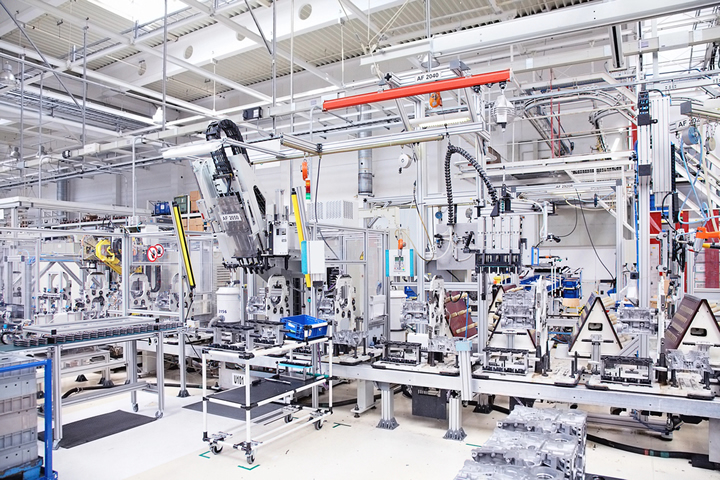The Data Imperative for Smart Microfactories: Enabling Real-Time Agility and Resilience

As manufacturers race to modernize operations and build resilience, the conversation has shifted from automation to intelligence, from big, centralized factories to nimble, distributed microfactories.
But the success of these smart factories won’t be measured by robotics alone. It will depend on how well data flows across systems, roles, and time horizons. Currently, most manufacturers are underprepared.
The Shift Toward Microfactories
Microfactories are gaining traction across organizations, from those that produce electric vehicles (EVs) and medical devices, to those that manufacture aerospace equipment and personalized consumer goods. Microfactories are small, modular, hyper-automated production units often located closer to end markets.
Why the rise?
- Demand volatility requires flexibility and fast reconfiguration.
- Supply chain disruptions demand local manufacturing options.
- Sustainability goals push for shorter logistics chains.
- Customer expectations favor customized, low-volume production.
But microfactories are not just smaller replicas of mega-factories. They operate with radically different assumptions:
- Data is real-time and transient, not batch-processed.
- Production is modular, not linear.
- Decision-making is distributed, not centralized.
These differences put enormous pressure on traditional data architectures.
A Hidden Bottleneck: Static, Centralized Data Architectures
Most manufacturers rely on data strategies designed for a different era. Data lakes, data warehouses, and other monolithic systems may serve well for historical reporting, but they struggle in high-speed, multi-system, low-latency environments like smart microfactories. Data lakehouses, the modern alternative, are similarly monolithic, and unable to integrate data from supporting data sources without costly, complex, and time-consuming replication.
Consider the reality on the factory floor:
- Machine telemetry arrives by the second.
- Environmental sensors fluctuate by the minute.
- ERP updates and MES statuses shift hour by hour.
- PLM specifications evolve with design cycles.
This flood of ephemeral, distributed, and system-specific data creates a visibility gap. Manufacturing leaders need insights, not raw data. Data scientists need curated features, not fragmented fields. Operations teams need up-to-date dashboards, not stale reports.
Logical Data Management: A Modern Approach
This is where logical data management plays a critical role. It leverages a virtualized, real-time data access layer that connects disparate systems, from product lifecycle management (PLM) and manufacturing execution systems (MES) to Internet of Things (IoT) and enterprise resource planning (ERP) systems, without relying on first physically moving data. It enables manufacturing teams to:
- Query data in place across cloud, edge, and on-prem systems.
- Create AI-ready, governed data products tailored to use cases.
- Maintain end-to-end traceability for compliance and environment, social, and governance (ESG) reporting.
- Deliver instant access to trusted data for digital twins, dashboards, and AI models.
In essence, logical data management serves as the data orchestration layer that enables smart factories, and particularly microfactories, to function as cohesive, insight-driven environments.
Real-World Impact: Transient Data in Action
Picture a medical device microfactory mid-production. Suddenly, environmental sensors detect a spike in humidity and vibration. These very small anomalies could have big consequences. Yet, with logical data management, edge devices are able to capture the data locally and make it instantly available for analysis. In the past, that kind of data might have gone unnoticed until post-production reviews. Now, it can be queried in real time, cross-referenced with batch data and machine diagnostics, and fed straight into a digital twin that spots deviations as they happen. Operators are alerted immediately, allowing them to recalibrate before the batch is compromised. What’s unique about this situation is that after production finishes, the data doesn’t disappear. Instead, it is archived for quality control and future audits. The real win? Gaining immediate access to transient data across systems, without having to move it, copy it, or wait for it.
Bridging OT, IT, and Engineering: The PLM Connection
Product Lifecycle Management (PLM) systems are evolving from static design archives to central hubs of cross-functional collaboration. PLM systems now have the potential to underpin smart manufacturing by acting as a coordination layer across engineering, operations, and supply chain.
But this vision is only achievable if PLM can:
- Connect to live production data for closed-loop feedback.
- Share specifications with MES and ERP systems in real time.
- Feed AI models with relevant design and test metadata.
Logical data management makes this possible by:
- Federating PLM data into operational systems without duplication.
- Creating virtual joins between design, production, and quality data.
- Enabling self-service access for engineering, QA, and operations.
This turns PLM systems into live nodes in smart factories’ digital nervous systems.
Accelerating AI, Digital Twins, and Compliance
Smart microfactories often embed:
- AI/ML for predictive maintenance, quality inspection, and adaptive production
- Digital twins for virtual commissioning and real-time simulation
- Compliance systems for traceability, sustainability, and regulatory needs
But none of these tools function well with outdated or inaccessible data. Logical data management provides consistent and governed AI models, digital twins with live multi-source data feeds, and compliance teams with the ability to generate on-demand ESG reports. This is all without rebuilding data pipelines or copying sensitive information into yet another silo.
Final Thoughts: Smart Factories Need Smarter Data Layers
Microfactories, digital twins, and AI-first manufacturing strategies are not science fiction, they are here. But their success depends not just on sensors and robotics, but on how well data is connected, contextualized, and consumed. Logical data management enables this shift by offering a real-time data access layer, federated views across operational technology (OT), information technology (IT), and engineering systems, and agile data products for AI, compliance, and decision support. As manufacturing becomes more modular, local, and intelligent, companies need to rethink not just their machines, but their data foundation. Smart manufacturing isn’t just about what you automate. It’s about what you know and how fast you can act.
Featured Product

